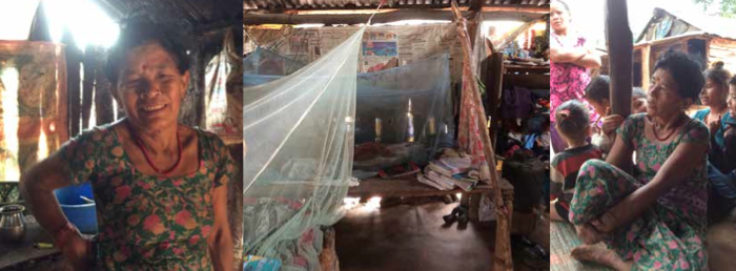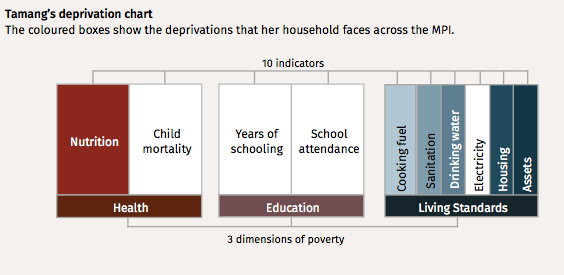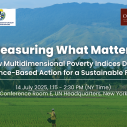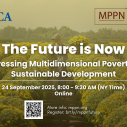
Search
A Day in the Life: Living in multidimensional poverty in Nepal, Tamang’s story

Tamang*, a 56-year-old landless woman from an indigenous minority caste, lives near a remote jungle in Nepal with her husband, who has severe disabilities and a low body mass index (less than 18.5), and two granddaughters, who are attending school, the older of whom just started 7th grade.
Her livelihood is collecting and selling wood. Waking before dawn, she feeds the chickens then walks with friends to the jungle to collect wood, often going deep inside, which is not safe due to wild animals. After chopping the wood, she carries it on her back to the market, because she does not own any means of transportation. If she sells the wood, she buys some rice and vegetables for the family, returning home around 11am. After cooking lunch, she returns to the jungle to fetch her own cooking fuel.
Tamang lives in a rudimentary single-room hut with a dirt floor. She has no toilet and uses her neighbour’s unprotected well for drinking water. She has electricity but does not own a phone, refrigerator, television, or even a radio.
Despite plentiful obstacles, she is happy because the bonds of affection within her family are strong. She observes that happiness is something that we cannot buy in the market. Tamang is poor according to the global MPI. She is deprived in 44.4% of weighted indicators (see the chart below).
* Some details have been changed.
This article was published in Dimensions 8.

















